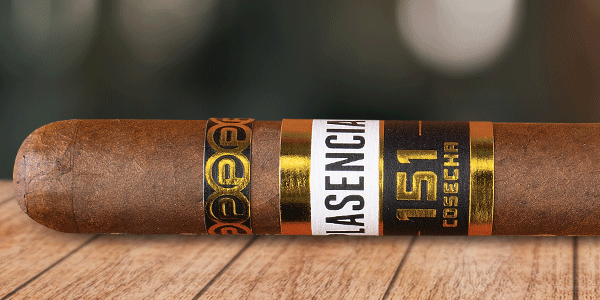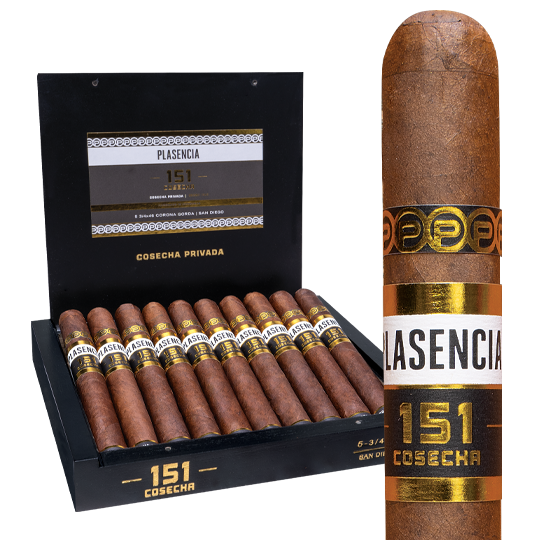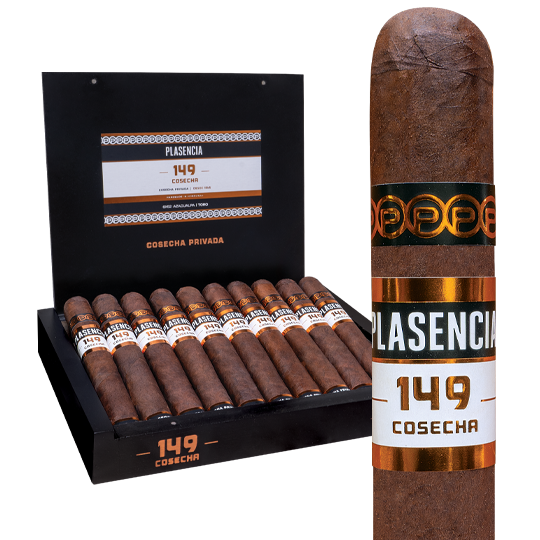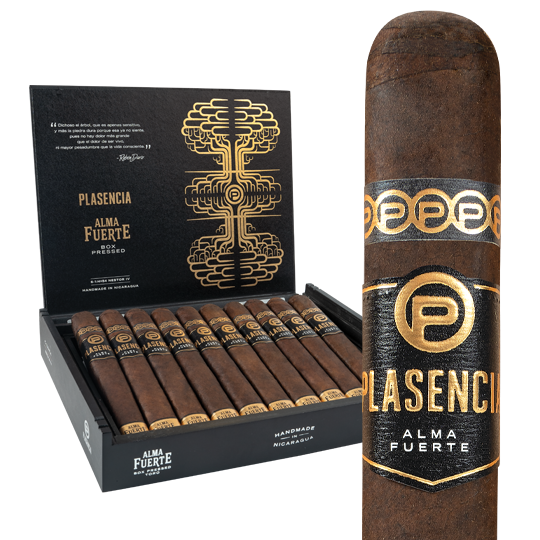Plasencia Cosecha 151 Staff Review
Today I’m smoking Plasencia Cosecha 151 in a 5.874-by-54 format called La Tradicion. This oily, reddish-brown smoke is blended entirely from premium Honduran tobaccos, and it’s handmade at the Plasencia factory in Estelí, Nicaragua. Cosecha is Spanish for “harvest,” and the Cosecha series references the harvest year. For example, Cosecha 151 is the 151st consecutive tobacco crop harvested by the Plasencias when you trace their lineage as tobacco growers back to 1865 in Cuba.
Nestor Plasencia Jr. is a fifth-generation tobacco grower and cigarmaker, following in the footsteps of his father, Nestor Sr. The Plasencias operate multiple farms and factories in Honduras and Nicaragua and are one of the biggest growers of premium tobacco in the cigar industry. For the past twenty years, the Plasencias have been making cigars for several recognizable brands, including Alec Bradley and Rocky Patel. Their own Plasencia-branded blends have only been around since 2016. They’ve made steady progress establishing their name in premium retailers around the country thanks to favorable ratings from the critics in Cigar Aficionado who ranked Plasencia 1865 Alma Fuerte in the annual ‘Top 10 Cigars of the Year’ in 2017.
Although Plasencia Cosecha 151 cigars are handcrafted in Nicaragua, they’re blended entirely with tobaccos grown on the family’s Honduran farms. The cigars come in boxes of ten, and they’re dressed in black-and-white cigar bands with shiny gold lettering. When you encounter a fresh box, what’s likely to get your attention first is the color of the wrapper. Every cigar in the row shimmers with a deep mahogany sheen. The Plasencias have released two previous blends in the Cosecha series, Cosecha 146 and Cosecha 149. All of the tobaccos in Cosecha 151 come from the family’s 2016 harvest.
La Tradicion opens with semisweet notes of rum and wood when I clip the cap and spin the cigar around in my mouth a few times to taste the cold draw. Upon igniting the foot, Cosecha 151 is a bit earthy and pungent as the tobaccos begin to combust at uniform pace. Strong notes of bread are buttressed by bold spices that quickly penetrate the beak. The first few minutes suggest Cosecha 151 is good cigar to smoke in front of a campfire with a stiff bourbon.
Hints of nuts emerge through the middle, but, overall, Cosecha 151 blesses the palate with a big undercurrent of fresh tobacco and red pepper. I pick up a distinct note of cayenne in a lot of Honduran cigars. Hints of maple and dark fruit come into play in the second half, but they’re subtle. The Plasencias have blended a beefy smoke with Cosecha 151, but it’s probably more refined than other Hondurans I’ve smoked despite revealing an eye-twitching spice at different points as La Tradicion progresses.
Cosecha 151 burns even from top to bottom but the texture turns a bit dry at times. Discreet notes of hickory and birch bark resonate in the aftertaste before I’m down to the nub. This is a potent cigar. I wouldn’t smoke it too early in the day. The final minutes don’t reveal any drastic changes in flavor, but that’s okay. The woody and spicy taste of Cosecha 151 satisfies down to the end.
I’m happy to smoke Cosheca 151 again on a cool fall evening in the backyard thanks to its rugged taste and aroma and its hearty wrapper leaf. I think its robust flavor and consistent performance make it an easy cigar to smoke outside. My only skepticism comes from the price. When you consider today’s top cigar-producing countries, Nicaragua is first, the Dominican Republic is second, and Honduras is third.
Many Honduran cigars are highlighted for their value, though. At sixteen bucks for a single, La Tradicion is more expensive than most. Nestor Jr. wants to call attention to Honduran tobacco and elevate its status in the market with his Cosecha line. Sounds like a worthy mission. Add Plasencia Cosecha 151 to your next order and decide if it surpasses other Honduran handmades enough to justify a few extra bucks.







